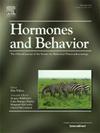The gold standard control groups in physiological and pharmacological research are not that shiny: Intraperitoneal saline injection and needle pricking affect prepubescent mice's behavior in a sex-specific manner
IF 2.4
3区 医学
Q2 BEHAVIORAL SCIENCES
引用次数: 0
Abstract
Study design and experimental tools are crucial for good quality science, and an essential part of it is the choice of control groups to best test the hypothesis. Two of the standard control groups in physiological and pharmacological research are needle pricking without substance injection (Sham) and/or vehicle injection (Saline). However, both needle pricking and saline injection can act as stressors, potentially influencing the analyzed outcome. This raises the question of whether the dependent variable remains unaffected by the stress induced by these procedures. Despite the significance of this issue, very few studies have investigated the behavioral effects of a single intraperitoneal (I.P.) Sham and/or single I.P. Saline injection in mice, and those that have used mostly adult males. In this study, we investigated if a single I.P. Sham and/or I.P. Saline injection affects female and male prepubertal (4-weeks-old) mice behavior. After Sham or Saline injection, we examined exploratory/motor behavior (open field test – OFT), anxiety-like behavior (elevated plus-maze – EPM), and behavioral despair/depressive-like behavior (forced swimming test – FST). We observed that both Sham prepubertal females and males showed behavioral alterations in OFT and EPM, and Saline males showed behavioral alterations in OFT and FST. On the other hand, prepubertal Saline females showed an increase in exploratory behavior, risk assessment/anxiety-like behavior, and behavioral despair/depressive-like behavior. Thus, our findings indicate that control procedures commonly used in physiological and pharmacological experimental designs affect the behavior of prepubescent mice, with more pronounced effects in females than in males. This study suggests considering Naïve animals together with Sham and/or Vehicle for a better and more honest interpretation of the data.
生理学和药理学研究中的金标准对照组并没有那么闪亮:腹腔注射生理盐水和针刺会以一种性别特异性的方式影响青春期前小鼠的行为
研究设计和实验工具对高质量的科学至关重要,其中一个重要部分是选择控制组来最好地检验假设。生理和药理学研究的两个标准对照组是针刺无物质注射(Sham)和/或载体注射(生理盐水)。然而,针刺和生理盐水注射都可以作为应激源,潜在地影响分析结果。这就提出了一个问题,即因变量是否不受这些程序引起的压力的影响。尽管这个问题很重要,但很少有研究调查单一腹腔内注射(I.P.)的行为影响。假手术和/或单次注射生理盐水给小鼠,使用的主要是成年雄性。在这项研究中,我们研究了单次I.P.假药和/或I.P.生理盐水注射是否会影响雌性和雄性青春期前(4周龄)小鼠的行为。在假手术或生理盐水注射后,我们检查了探索/运动行为(开放场测试- OFT),焦虑样行为(升高+迷宫- EPM)和行为绝望/抑郁样行为(强迫游泳测试- FST)。我们观察到假的青春期前女性和男性在OFT和EPM方面表现出行为改变,生理盐水男性在OFT和FST方面表现出行为改变。另一方面,生理盐水女性的探索性行为、风险评估/焦虑样行为和行为绝望/抑郁样行为均有所增加。因此,我们的研究结果表明,生理和药理学实验设计中常用的控制程序会影响青春期前小鼠的行为,对雌性的影响比雄性更明显。这项研究建议将Naïve动物与Sham和/或Vehicle一起考虑,以便更好、更诚实地解释数据。
本文章由计算机程序翻译,如有差异,请以英文原文为准。
求助全文
约1分钟内获得全文
求助全文
来源期刊

Hormones and Behavior
医学-行为科学
CiteScore
6.70
自引率
8.60%
发文量
139
审稿时长
91 days
期刊介绍:
Hormones and Behavior publishes original research articles, reviews and special issues concerning hormone-brain-behavior relationships, broadly defined. The journal''s scope ranges from laboratory and field studies concerning neuroendocrine as well as endocrine mechanisms controlling the development or adult expression of behavior to studies concerning the environmental control and evolutionary significance of hormone-behavior relationships. The journal welcomes studies conducted on species ranging from invertebrates to mammals, including humans.
 求助内容:
求助内容: 应助结果提醒方式:
应助结果提醒方式:


